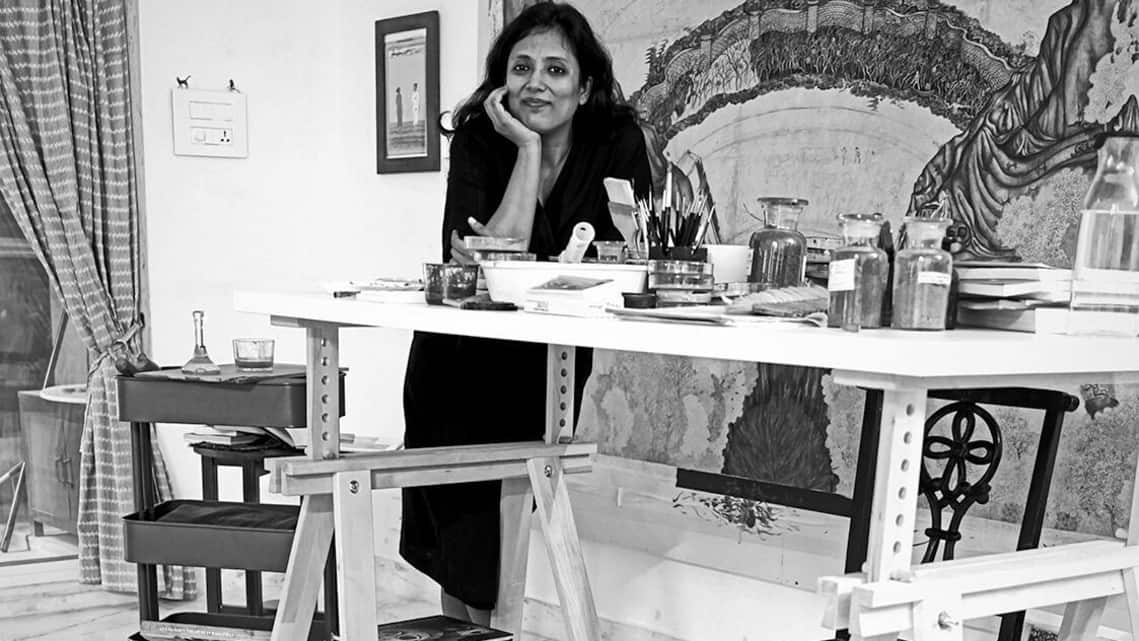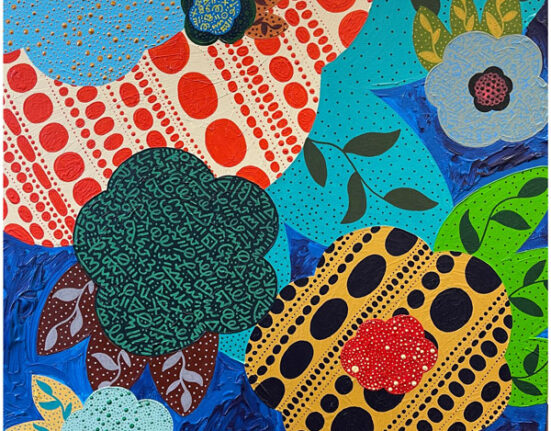For most artists, their workshop is both a creative retreat and a professional necessity. After years of working out of her family residence in Hyderabad, Varunika Saraf is finally enjoying the freedom of having her own studio for the first time in her life. In 2018, she bought a 1,500 sq. ft. flat in the same building as her parents’ home. Saraf, 42, typically works on large-format watercolour tapestries, which are labour-intensive, and this new space is perfectly tailored to her needs. “It’s functional and I don’t waste time commuting,” she laughs.
Saraf is not the kind of artist who waits for inspiration to strike. “Ideas come in the course of everyday routine,” she declares. In the otherwise dignified calm of her workspace, a subversive visual detail stands out—a pinboard playfully dubbed the “Purgatory”. On any given day, the so-called Purgatory is teeming with pieces of embroidery she loves, newspaper clippings, archival photographs or the works of one of her favourite artists, Nancy Spero. In a sense, it functions as an incubator where she keeps “a record of ideas not yet born”.
SIMILAR STORIES
Drawing from her experience as an art historian specialising in Indian miniature traditions, Saraf has made the use of wasli (handmade paper) central to her practice. The recent Asia Arts Game Changer Awards India winner grinds her own pigments and prepares wasli herself in the studio—a laborious process that involves transforming thin sheets of paper into a thickened surface muscular enough to withstand several cycles of watercolour washes. The sophisticated symphony of colour that you see in her paintings is a result of the artist applying and experimenting with layers of various tones and shades until she finds the precise colour that corresponds with the “feeling” she wants to convey.
Even though Saraf’s art is bold and optimistic, its true power lies in its unflinching commentary on contemporary India. From the searing scars of Partition in 1947 and the Bhopal chemical disaster of 1984 to the struggles of farmers and dissenters, here’s a voice constantly dreaming of a better world—perhaps a testament to her own restless conscience. Yet, she refuses to be pinned down as a “political artist”. Instead, she says, “Everything we do is inherently political. It’s reflected in all aspects of our life and the choices we make, including our interpersonal relationships. Even taking an ‘apolitical’ stance is a political choice.”







